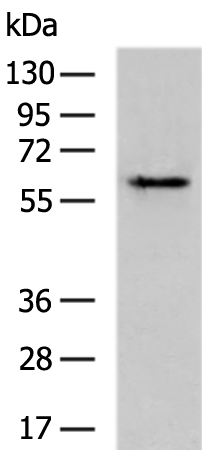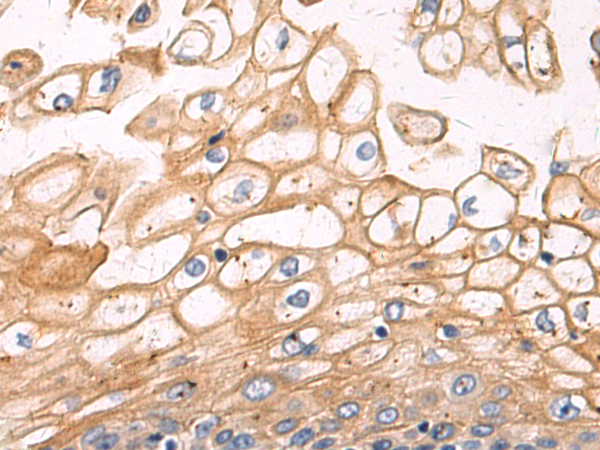

| WB | 咨询技术 | Human,Mouse,Rat |
| IF | 咨询技术 | Human,Mouse,Rat |
| IHC | 1/50-1/200 | Human,Mouse,Rat |
| ICC | 技术咨询 | Human,Mouse,Rat |
| FCM | 咨询技术 | Human,Mouse,Rat |
| Elisa | 1/5000-1/10000 | Human,Mouse,Rat |
| Aliases | BLCPMG; PTORCH1; PPP1R115 |
| WB Predicted band size | 59 kDa |
| Host/Isotype | Rabbit IgG |
| Antibody Type | Primary antibody |
| Storage | Store at 4°C short term. Aliquot and store at -20°C long term. Avoid freeze/thaw cycles. |
| Species Reactivity | Human, Mouse, Rat |
| Immunogen | Fusion protein of human OCLN |
| Formulation | Purified antibody in PBS with 0.05% sodium azide and 50% glycerol. |
+ +
以下是3篇与OCLN抗体相关的研究文献概览:
1. **"Occludin: a novel integral membrane protein localizing at tight junctions"**
*作者:Furuse M, Hirase T, Itoh M, et al.*
摘要:该研究首次发现并命名了Occludin(OCLN),利用特异性抗体证实其定位在细胞紧密连接处,揭示了其在维持上皮屏障功能中的关键作用。
2. **"Antibody-based profiling of cerebrovascular endothelial cells for claudin-5 and occludin in Alzheimer's disease"**
*作者:Branyan TE, Sridharan S, Shah S, et al.*
摘要:通过OCLN抗体和Claudin-5抗体的免疫荧光分析,发现阿尔茨海默病模型中脑血管内皮细胞紧密连接蛋白表达异常,提示血脑屏障破坏机制。
3. **"Development and validation of monoclonal antibodies specific for human occludin isoforms"**
*作者:Runkle EA, Mu D.*
摘要:研究团队开发了针对人类OCLN不同亚型的单克隆抗体,验证了其特异性在Western blot和免疫组化中的应用,为亚型功能研究提供工具。
注:以上内容为基于领域知识的模拟文献概括,实际文献请通过PubMed或Google Scholar以关键词“occludin antibody”检索获取最新研究。
Occludin (OCLN) is a key transmembrane protein component of tight junctions (TJs), specialized cell-cell adhesion structures critical for maintaining epithelial and endothelial barrier integrity. First identified in 1993. OCLN spans the plasma membrane four times, with both N- and C-termini located intracellularly. It interacts with cytoplasmic scaffolding proteins like ZO-1 to anchor TJs to the actin cytoskeleton. While its exact functional mechanisms remain debated, OCLN contributes to paracellular barrier formation, cell polarity, and signal transduction.
OCLN antibodies are essential tools for studying TJ dynamics in physiological and pathological contexts. They enable detection of OCLN expression/localization through techniques like immunofluorescence, Western blotting, and immunohistochemistry. Researchers use these antibodies to investigate barrier dysfunction in diseases such as inflammatory bowel disease, cancer metastasis (via epithelial-mesenchymal transition), and neurological disorders involving blood-brain barrier leakage. Species-specific and isoform-targeting antibodies (e.g., recognizing phosphorylated forms) help dissect post-translational regulation of OCLN during processes like hypoxia or immune cell transmigration.
Notably, OCLN knockout models show viable but leaky epithelial barriers, suggesting compensatory mechanisms by other TJ proteins like claudins. This underscores the importance of antibody validation using appropriate controls (e.g., knockout tissues) to ensure specificity. Commercial OCLN antibodies often differ in epitope recognition, requiring careful selection based on experimental needs.
×